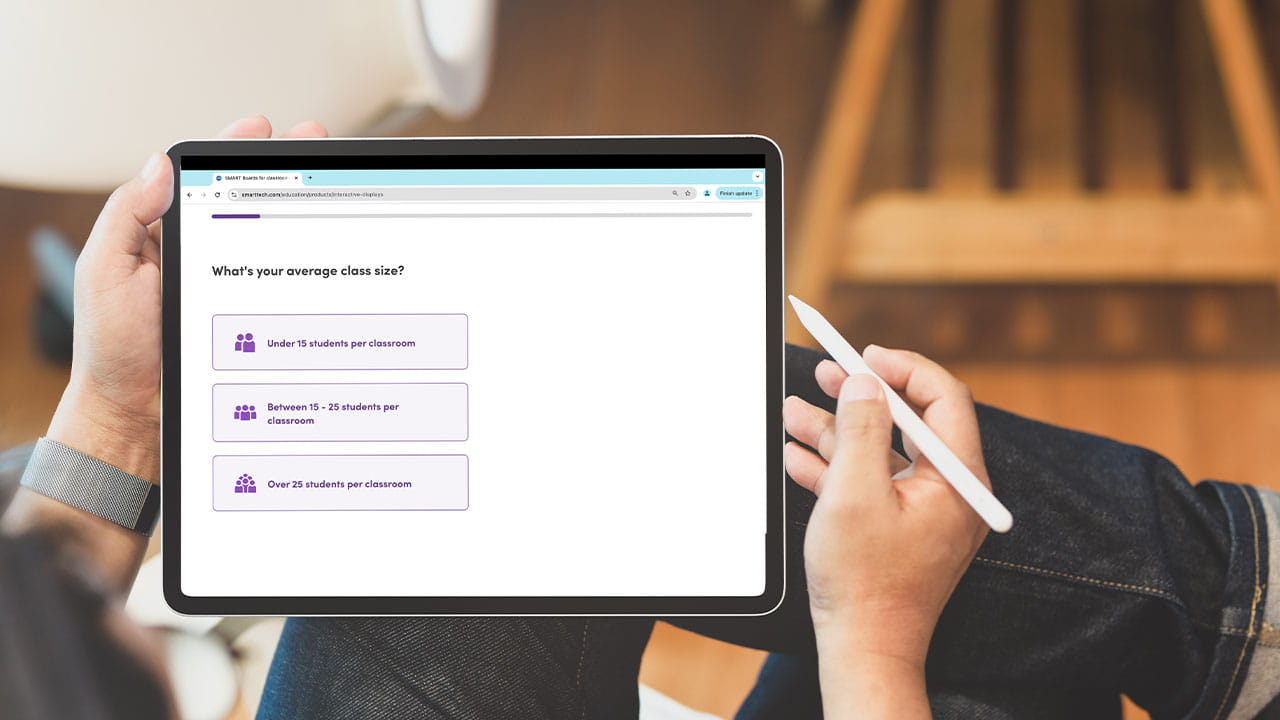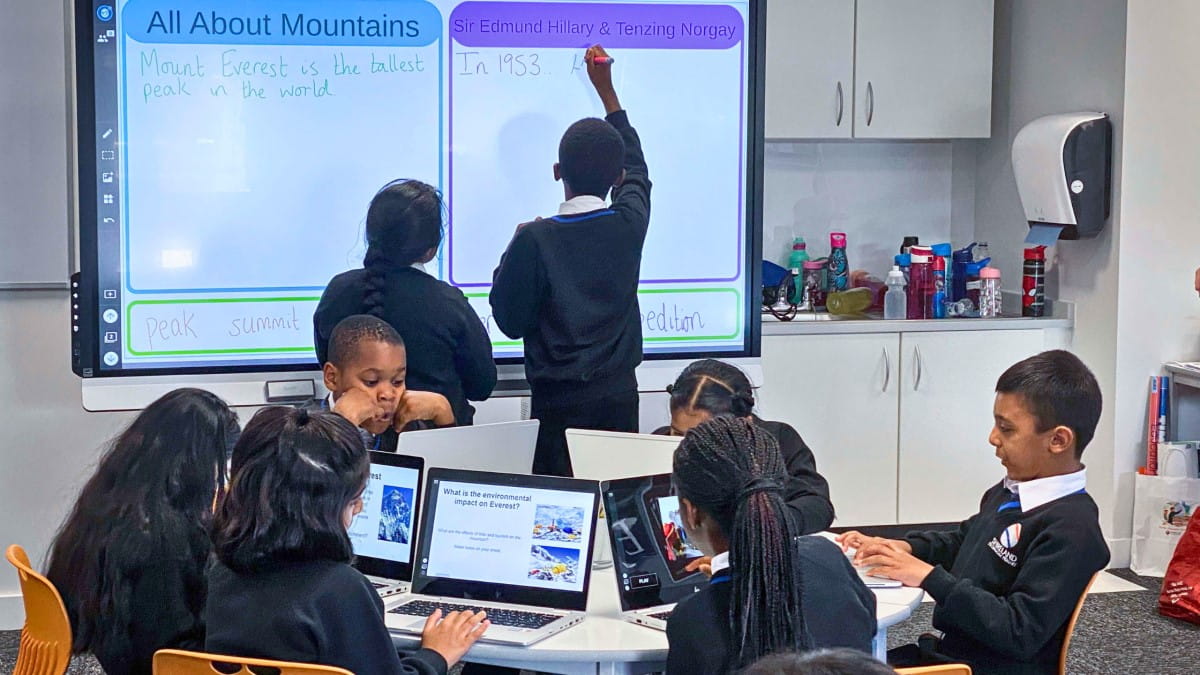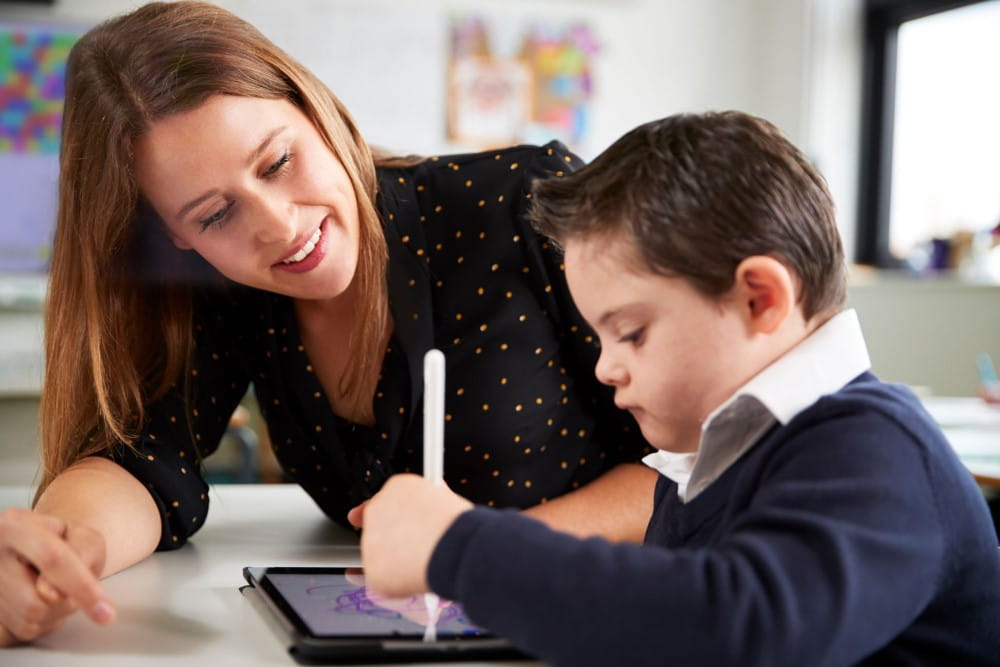Meeting the needs of everyone in the classroom matters deeply to teachers who have committed their careers to education. That’s exactly the aim of inclusive learning. This approach equips students with the skills and confidence to navigate the world beyond the classroom, contributing positively to their own lives and communities.
“It’s about making sure everybody can come into the classroom and see a pathway to their future,” says Kris Astle, Education Strategist with SMART.
Providing an inclusive learning environment means increasing all students’ access to engagement, participation, and expression. Fewer than half of children with diverse cognitive intellectual abilities are in fully inclusive school settings, yet research shows all students benefit from inclusive classrooms, according to Inclusive Education Canada.
In this article on inclusive learning, we’ll explore:
- What inclusive learning is all about
- Why it’s important for both learners and educators
- Key features of inclusive classrooms
- Classroom tools that support inclusion strategies
- Three tips for implementing inclusive learning in your classroom
What is inclusive learning?
Inclusive learning is an approach to education that ensures that all students, regardless of their learning styles, can thrive together within the same learning environment. It aims to enable every student to engage with the curriculum, demonstrate their knowledge, and participate meaningfully.
“Inclusive education is about getting all kids in the same classroom regardless of how they learn,” says Astle. “It’s making sure every student has a way to access, engage with, and show what they know in the grade-level classroom that’s appropriate for them.”
When inclusion is prioritized in a learning environment, schools provide the tools to support learning for all students. When each student's voice is heard, and their access to classroom content is enhanced, all learners can exercise their potential.
How inclusive learning impacts both learners and educators
Creating inclusive classrooms has a profound impact on student success. By accommodating diverse learning styles and providing multiple, flexible avenues for participation and comprehension, an inclusive classroom ensures every student can find value in their learning journey.
“Bringing them into an inclusive classroom and giving them a pathway for creating and expressing their skills, strengths, and interests shows that we value them as people,” says Astle. “As soon as we do that, we build a community and create a safe space.”
Embracing inclusive learning practices yields multiple benefits for educators as well. It paves the way for universally engaged students, diminishing the challenges that can stem from a lack of meaningful engagement. Instead of spending their days addressing these issues, teachers can devote their efforts to establishing a cooperative and supportive environment.
Key features of inclusive classrooms
It’s common for students with diverse needs to be underestimated based on their capacity to learn in traditional ways, but inclusive learning takes a different approach.
“Inclusive learning isn’t about making things easier. It’s about creating different, more accessible pathways to learning,” says Astle.
Here are a few essential elements of classrooms where inclusive learning is alive and well:
- High expectations of all learners: Teachers who keep universally high expectations in the classroom focus on what students can do instead of what they can’t.
- Individualized support: Inclusion means bringing in the appropriate resources that each student needs to access the learning and showcase their thinking until the entire class is able to participate.
- Instruction based on the appropriate curriculum: Alternative pathways to learning and expression help keep all students working through the same curriculum while accommodating various learning needs.
Classroom tools that support inclusion strategies
To create an environment where all students can participate in their own way, it’s critical to consider the different obstacles that can undermine learning and offer solutions. Inclusive classroom design must include technology tools that seamlessly support students to learn and express themselves however they choose.
The best of these tools will help all students collaborate and participate with ease. They give teachers the flexibility to personalize lessons and adapt pacing to suit students, ensuring everyone stays engaged, and that they can work through lesson material at a customized pace.
One of these tools is Lumio, a digital learning tool that helps learners connect and learn with their peers, in class or at home, all from their student devices. Teachers can directly teach lesson material, then move students into their own flow in that same lesson.
“Pacing is one of the amazing things about Lumio,” says Astle. “Students need different amounts of time to process and practice, and Lumio allows this transition between teacher and student pacing.”
Another useful piece of inclusive learning tech is the SMART Board 6000S with Tool Explorer, offering an easy-to-navigate, walk-up-and-use experience. It’s the only interactive display that enables students to use easier-to-grip objects like stamps and cubes to engage with digital content.
“The Tool Explorer brings a whole set of physical tools to the board,” says Astle. “It’s a way to come up and interact with the board that doesn’t require language. It allows for nonverbal expression so students can give feedback and create.”
3 tips for implementing inclusive learning in your classroom
Ready to find out how you can bring a more inclusive approach into your classroom settings? Here are three tips that can help you implement inclusive learning successfully, so you can foster greater student engagement and learning progress:
-
Create a psychologically safe and welcoming environment
Creating a psychologically safe and welcoming environment involves teaching respect, self-awareness, and valuing diversity. In practice, this can include encouraging expression from all, facilitating and moderating class discussions to ensure equitable participation, and building self-awareness in students.
Teachers play a crucial role in addressing subtle biases through consistent intervention and clear communication, ensuring a shared understanding of respectful behavior within the classroom. -
Lean into research-based instructional practices
Embracing research-based instructional methods is essential, focusing on strategies like multi-level learning (where one lesson is taught to an entire group, while meeting individual needs) and activity-based instruction. These approaches prioritize differentiated instruction over traditional lectures, which is especially crucial in a diverse classroom.
Using technology to provide individualized support and enhance accessibility enriches the learning experience for all. Teachers can help all students make meaningful progress in the classroom, while students can demonstrate what they know, unlocking connection with both teachers and others in the class. -
Create space for all voices in the classroom
Encouraging active listening and equal participation from students and teachers is vital to ensuring every student feels respected, heard, and supported, leading to progress.
Additionally, encouraging the creative application of knowledge expands students' horizons, broadening their options. When students are given alternative methods of communicating their understanding, the potential for them to contribute in meaningful ways grows exponentially.
The ultimate goal of inclusive learning is to establish a classroom environment where every student can envision a path toward their future, with as few barriers as possible blocking the view. With the right tools that promote inclusive collaboration and welcome a diverse range of physical and cognitive abilities, schools can help students to interact more freely in the classroom.




